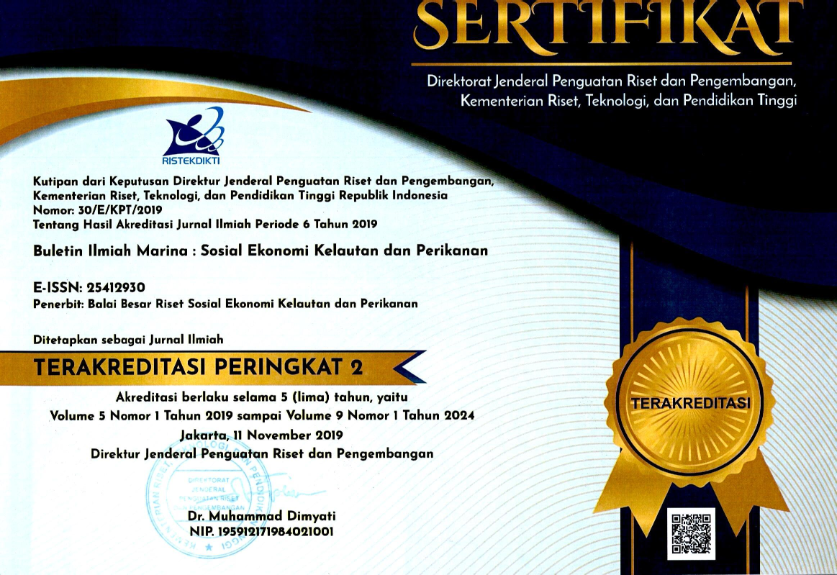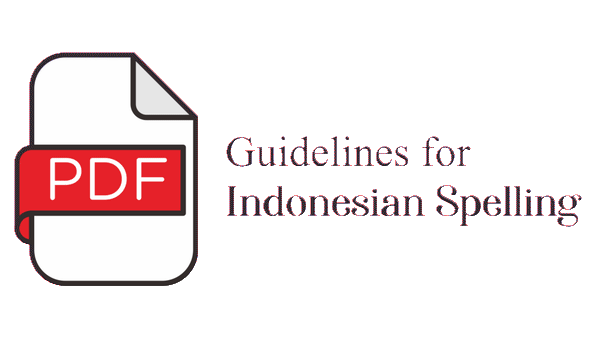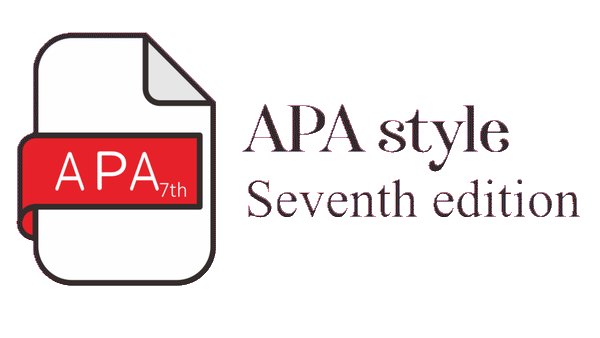Studi Kualitatif tentang Jebakan Kemiskinan pada Masyarakat Pesisir di Pasuruan, Jawa Timur
Abstract
Kemiskinan cenderung menjadi problem sosial yang tidak bisa hilang di kalangan masyarakat pesisir. Studi yang difokuskan pada eksplorasi akar masalah kemiskinan di kawasan ini tampaknya tidak begitu banyak. Riset ini dilakukan di Desa Jatirejo, Jawa Timur dengan tujuan untuk menjelaskan karakteristik rumah tangga miskin di kawasan pesisir dan menganalisis faktor penyebab kemiskinan yang ada di sana. Melalui pendekatan kualitatif bergenre fenomenologi pada tahun 2021, riset ini memanfaatkan perangkat lunak (software) kualitatif NVivo 12 untuk menganalisis data lapangan yang berupa transkripsi wawancara, catatan lapangan (field notes) observasi, dan dokumen kearsipan. Hasil penelitian menunjukkan bahwa kompleksitas masalah rumah tangga miskin di kawasan pesisir ternyata tidak hanya berkaitan dengan isu rendahnya sumber daya manusia atau ketidakmampuan dalam mengelola sumber daya alam, tetapi juga adanya perangkap kemiskinan yang dibuat oleh pihak lain. Masyarakat pesisir dianggap miskin karena memiliki mata pencaharian yang tidak menguntungkan, beban utang rumah tangga yang makin besar, dan kualitas hidup yang rendah. Kondisi tersebut tetap langgeng karena mereka bergantung pada sumber daya laut, terjebak dalam perangkap tengkulak dan pemilik modal, dan memiliki kreativitas dalam usaha yang rendah serta pola pikir pengelolaan uang rumah tangga yang tidak efektif. Pengungkapan akar masalah kemiskinan di kawasan pesisir ini seyogianya bisa membantu pihak-pihak terkait (pemerintah, LSM, dsb.) dalam hal merumuskan strategi pengentasan kemiskinan secara jitu.
Title: A Qualitative Study on Poverty Trap in Coastal Community of Pasuruan, East Java
Poverty tends to be a sustained social problem in coastal communities. Studies focusing on exploring the causes of poverty in this region seem lagging. Taking a research location in Jatirejo Village, East Java, this research aims to explain the characteristics of poor households in coastal areas and analyze the causes of poverty that exist there. Employing phenomenological-approach-based qualitative methods in 2021, this study utilizes qualitative software NVivo 12 in order to analyze data from interview transcripts, observation field notes, and archival documents. The results show that the complexity of the poverty problem for households in coastal areas is not only related to the issue of low quality of human resources or the inability to manage natural resources but also due to the existence of poverty traps made by other parties. Coastal communities are considered poor because they have unprofitable livelihoods, increasing household debt burden, and low quality of life. These poor conditions stay longer because of their dependence on marine resources, trapped in the decoy of capital owners, low creativity in business, and an ineffective household money management mindset. Disclosure of the causes of poverty in this coastal area should be able to assist the relevant parties (government, NGOs, etc.) in formulating strategies for poverty alleviation in a precise manner.
Keywords
Full Text:
PDFReferences
Alkire, S., & Foster, J. (2011). Counting and multidi- mensional poverty measurement. Journal of Public Economics, 95(7–8), 476–487. https://doi. org/10.1016/j.jpubeco.2010.11.006.
Alkire, S., Roche, J.M., & Vaz, A. (2017). Changes over time in multidimensional poverty: Methodology and results for 34 countries. World Development, 94, 232–249. https://doi.org/10.1016/j. worlddev.2017.01.011.
Badan Pusat Statistik. (2020). Persentase penduduk miskin Maret 2020 naik menjadi 9,78 persen. Retrieved from https://www.bps.go.id/ pressrelease/2020/07/15/1744/persentase- penduduk-miskin-maret-2020-naik-menjadi-9- 78-persen.html.
Badan Pusat Statistik. (2021). Data dan Informasi Kemiskinan Kabupaten/Kota 2021. Jakarta.
Barbier, E.B., & Hochard, J.P. (2019). Poverty-envi- ronment traps. Environmental and Resource Economics: The Official Journal of the European Association of Environmental and Resource Economists, 74(3), 1239–1271. https://doi. org/10.1007/s10640-019-00366-3.
Baumstarck, K., Boyer, L., & Auquier, P. (2015). The role of stable housing as a determinant of pover- ty-related quality of life in vulnerable individuals. International Journal for Quality in Health Care: Journal of the International Society for Quality in Health Care, 27(5), 356–360. https://doi. org/10.1093/intqhc/mzv052.
Brummund, P., Mann, C., & Rodriguez-Castelan, C. (2018). Job quality and poverty in Latin America. Review of Development Economics, 22(4), 1682–1708. https://doi.org/10.1111/rode.12512.
Cassels, S., Curran, S.R., & Kramer, R. (2005). Do migrants degrade coastal environments? Migration, natural resource extraction and poverty in North Sulawesi, indonesia. Human Ecology, 33(3), 329–363.
Creswell, J. W. (2009). Research Design: Qualitative, Quantitative and Mixed Approaches (3rd Edition). In SAGE Publications. California: SAGE Publications. https://doi.org/10.2307/1523157.
Datta, S.K. (2015). Rural poverty and female job participation: A case study of two districts in West Bengal. The Bangladesh Development Studies, 38(1), 55–76.
Desa Jatirejo. (2020). Buku Profil Desa Jatirejo Tahun 2020. Jatirejo, Pasuruan.
Filandri, M., Pasqua, S., & Struffolino, E. (2019). Being working poor or feeling working poor? The role of work intensity and job stability for subjective poverty. Social Indicators Research: An International and Interdisciplinary Journal for Quality-of-Life Measurement, 147(3), 781–803. https://doi.org/10.1007/s11205-019-02174-0.
Flick, U. (2009). An introduction to qualitative research.
London: SAGE Publications.
Foster, J.E. (1998). What is poverty and who are the poor? Redefinition for the United States in the 1990’s - Absolute versus Relative Poverty. The American Economic Review, 88(2), 335–341.
Gao, Q., Xu, H., & Yuan, B. (2021). Environmental change and fishermen’s income: is there a poverty trap Evidence from China’s coastal areas. Environmental Science and Pollution Research, 28(43), 60676–60691. https://doi.org/10.1007/ s11356-021-14254-1.
Glavovic, B. C., & Boonzaier, S. (2007). Confronting coastal poverty: Building sustainable coastal livelihoods in South Africa. Ocean and Coastal Management, 50(1–2), 1–23. https://doi. org/10.1016/j.ocecoaman.2006.07.001.
Kementerian Sosial. (2020). Data Terpadu Kesejahteraan Sosial (DTKS) Kabupaten Pasuruan: Periode Oktober 2020.
Khan, S.N. (2014). Qualitative research method-Phe- nomenology. Asian Social Science. https://doi. org/10.5539/ass.v10n21p298.
Krisnajayanti, F., & Zain, I.M. (2016). Kajian permukiman kumuh di kawasan pesisir Desa Jatirejo Kecamatan Lekok Kabupaten Pasuruan. Swara Bhumi, 4(2), 93–101.
Kurniawati, A., Yuliati, Y., & Susilo, E. (2021). Social adapter model: Development of coastal resources potential through empowerment of coastal communities in Watu Pecak Beach Lumajang District. Habitat, 32(2), 54–62. https:// doi.org/10.21776/ub.habitat.2021.032.2.7.
Lawson, E.T., Gordon, C., & Schluchter, W. (2012). The dynamics of poverty-environment linkages in the coastal zone of Ghana. Ocean and Coastal Management, 67, 30–38. https://doi. org/10.1016/j.ocecoaman.2012.05.023.
Lázár, A.N., Adams, H., Neil Adger, W., & Nicholls, R.J. (2020). Modelling household well-being and poverty trajectories: An application to coastal Bangladesh. PLoS ONE, 15(9 September), 1–23. https://doi.org/10.1371/journal.pone.0238621.
Misturelli, F., & Heffernan, C. (2010). The concept of poverty: A synchronic perspective. Progress in Development Studies, 10(1), 35–58. https://doi. org/10.1177/146499340901000103.
Mussadun, & Nurpratiwi, P. (2016). Kajian Penyebab Kemiskinan Masyarakat Nelayan di Kampung Tambak Lorok. Journal of Regional and City Planning, 27(1), 49–67. https://doi.org/10.5614/ jrcp.2016.27.1.5.
Nakamura, S., & Avner, P. (2021). Spatial distributions of job accessibility, housing rents, and poverty: The case of Nairobi. Journal of Housing Economics, 51(101743). https://doi.org/10.1016/j. jhe.2020.101743.
Nsowah-Nuamah, N., Teal, F., & Awoonor-Williams, M. (2012). Jobs, skills and incomes in Ghana: How was poverty halved? Comparative Education, 48(2), 231–248.
Rejekingsih, T.W. (2009). Kemiskinan dan bagaimana memeranginya. AKSES: Jurnal Ekonomi Dan Bisnis, 4(7), 56–65.
Robles-Zavala, E. (2014). Coastal livelihoods, poverty and well-being in Mexico. A case study of institutional and social constraints. Journal of Coastal Conservation, 18(4), 431–448.
Sumodiningrat, G. (1998). Membangun Perekonomian Rakyat. Yogyakarta: Pustaka Pelajar dan IDEA.
Susilo, E. (2010). Dinamika Struktur Sosial dalam Ekosistem Pesisir. Malang: Universitas Brawijaya Press.
Susilo, E. (2019). Adaptor sosial dan kebudayaan maritim menuju integrasi peradaban nusantara (dipresentasikan dalam seminar nasional atas kerjasama antara Pusat Studi Peradaban Universitas Brawijaya dengan Fakultas Perikanan dan Ilmu Kelautan Universitas Brawijaya). Malang.
Susilo, E. (2021). How to bring the traditional fishermen into integrated management system for policy development in Indonesia. The 2nd International Conference on Fisheries and Marine Research (ICoFMR). Malang: Universitas Brawijaya.
Thorne, S. (2000). Data analysis in qualitative research.
EBN Notebook, 3, 68–70.
Tobey, J., & Torell, E. (2006). Coastal poverty and MPA management in mainland Tanzania and Zanzibar. Ocean and Coastal Management, 49(11), 834–854. https://doi.org/10.1016/j. ocecoaman.2006.08.002.
van Wesenbeeck, B. K., Balke, T., van Eijk, P., Tonneijck, F., Siry, H. Y., Rudianto, M. E., & Winterwerp, J. C. (2015). Aquaculture induced erosion of tropical coastlines throws coastal communities back into poverty. Ocean & Coastal Management, 116, 466–469. https://doi.org/10.1016/j. ocecoaman.2015.09.004.
Watson, D., Maître, B., Whelan, C. T., & Russell, H. (2017). Poverty, economic stress and quality of life: lessons from the Irish case. International Review of Economics : Journal of Civil Economy, 64(2), 125–143. https://doi.org/10.1007/s12232-
-0265-0.
DOI: http://dx.doi.org/10.15578/marina.v8i1.10960
Refbacks
- There are currently no refbacks.
Indexed by:
---------------------------------------------------------------------------------------
Published by
Balai Besar Riset Sosial Ekonomi Kelautan dan Perikanan
in collaboration with
Indonesian Marine and Fisheries Socio-Economics Research Network

This work is licensed under a Creative Commons Attribution-NonCommercial-ShareAlike 4.0 International License.


























